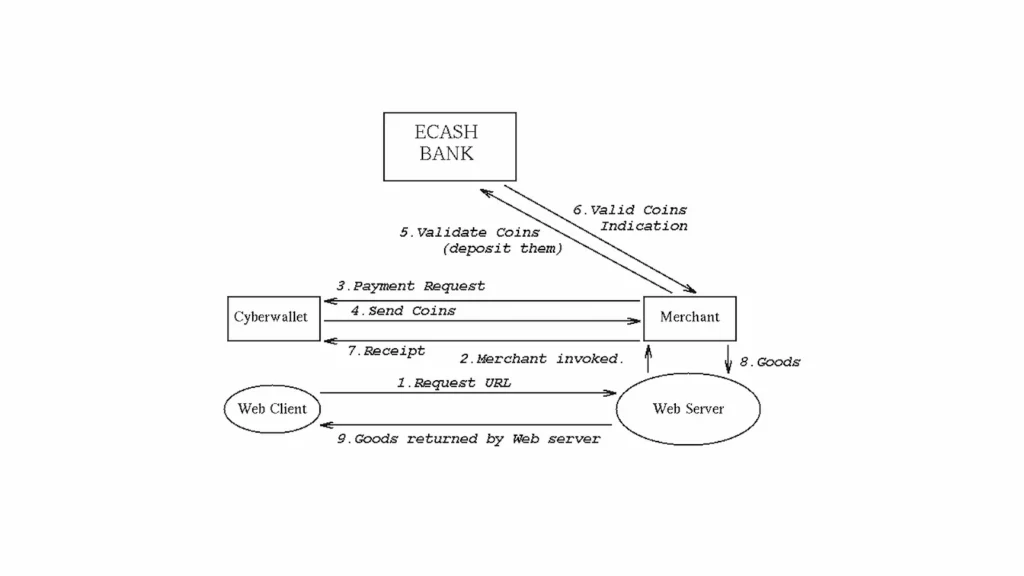
Back in 1983, a guy named David Chaum wrote a paper that would change the world. Though his name may have been largely forgotten by the masses, Chaum has been dubbed “The Father of Online Anonymity” and “The Godfather of Cryptocurrency” by those who have been paying attention to the scene for a while. While Chaum’s advancements in the field of cryptography are numerous, he is most commonly known today as the man who invented cryptocurrency.
Chaum’s 1983 paper, “Blind Signatures for Untraceable Payments”, was groundbreaking in both its scope and content. In the paper, Chaum outlined several principles at the heart of cryptocurrencies such as blind signatures, and a year earlier, his dissertation from the University of California at Berekely outlined nearly every aspect of the blockchain as we know it today; the only thing he left out was Proof of Work. However, Chaum’s impact on cryptography would go far beyond the theoretical.
Building on the theories laid out in his recent work, Chaum decided to put his money where his money was and launched his first company, DigiCash, in 1989 and trademarked the term “ecash”. DigisCash was created to facilitate digital micropayments between customers and retailers like credit cards. Much like credit cards, purchasers paid zero fees during the transaction, and transactions were meant to be fast, secure, and—most importantly—anonymous.
Based on his technical acumen and intense passion, Chaum was quickly able to raise $10 million in venture capital and the new ecash system was ready to launch. And people were starting to take note. Rival companies like CyberCash and First Virtual were starting to enter the scene while Chaum himself was asked to speak to the US Congress on the matter of digital currency and if it would one day replace fiat money.

An Unready World
The launch of ecash in the United States was met with little fanfare. There was no national marketing campaign with the biggest stars of the day trying to convince people to use it. Instead, DigiCash focused on working with financial institutions, assuming that they would be the ones in a position to get users onto the platform. This did not go particularly well. In the US, DigiCash was only able to find a single bank to partner with; the Mark Twain bank in Saint Louis, Missouri. Over a three-year trial period, the bank was only able to sign up about 5,000 customers with a combined value of less than $100,000.
It seemed that many American consumers were simply too used to credit cards, and the idea of a new and experimental payment system was simply a bridge too far for many. Across the Atlantic, though, things were heating up.
Europe largely skipped credit cards in the 1990s retaining a largely cash-based system until the mid-2000s. In June 1998, ecash became accepted at banks in Germany, Switzerland, Norway, and Sweden. It wasn’t just Europe, either, with institutions in Japan and Australia also accepting ecash.
Sadly, it would all be too little too late and DigiCash filed for bankruptcy in November 1998 before being passed around a series of companies over the next 20 or so years.
Making It Work
The actual mechanism behind ecash was, at the time, revolutionary. Although, by today’s standards, it’s actually fairly rudimentary. Users could download the DigiCash software (for free) to their home computers and create an account. Next, they would need to send cash or a check to a participating bank, and that money would be added to their DigiCash account. While browsing, a small window would appear with a user’s ecash balance, and providers and operators who supported the system could be carried out with just a few clicks, and the balance would be adjusted in nearly real-time.
Sound familiar? Yup, it’s basically a crypto wallet without the crypto. As mentioned, DigiCash only accepted and operated in fiat currency at the time, meaning that getting your cash into the system was a slow and tedious process. This proved to be a massive barrier to entry as virtually no one was willing to jump through the extra hoops when the credit card that was already in their wallet seemed to work perfectly.

You’ve Got to Walk Before You Can Run
While ecash would ultimately prove a commercial failure, it undoubtedly paved the way for the entire online shopping experience that we have today. When DigiCash was founded, Amazon was still five years away from existing and even by the late 90s, online shopping was in its very infancy. The idea of using the Internet as a marketplace was a novel concept; and one that was proving difficult to implement.
David Chaum once quipped that “As the Web grew, the average level of sophistication of users dropped.” As barriers to entry to the Internet were removed, more and more people were able to seamlessly access what had once been a space largely reserved for the technologically literate. This newfound adoption spurred the drive for new services online, and there was no shortage of companies looking to get in on the ground floor. The Dotcom Boom had arrived, and with it, an expanding need for secure, fast, and reliable transactions.
However, convincing the average user of the need for privacy or anonymity on the Internet proved to be an uphill battle—one many of us are still fighting today—and the adoption of ecash was limited. Most people preferred to use their credit cards online but for smaller purchases, the higher fees started to add up. These so-called micropayments—typically 25 cents to $10—were exactly the kind of problem that ecash was designed to solve.
In a 1994 interview with The New York Times, Chaum painted an eerily accurate portrait of where he saw the Internet going “As payments on the network mature, you’re going to be paying for all kinds of small things […] Every article you read, every question you have, you’re going to have to pay for it.”
While we may not have to pay per search, the heart of what he was speaking to has come to pass. Today, online purchases around the world total $5.7 trillion and that number is only expected to rise.

